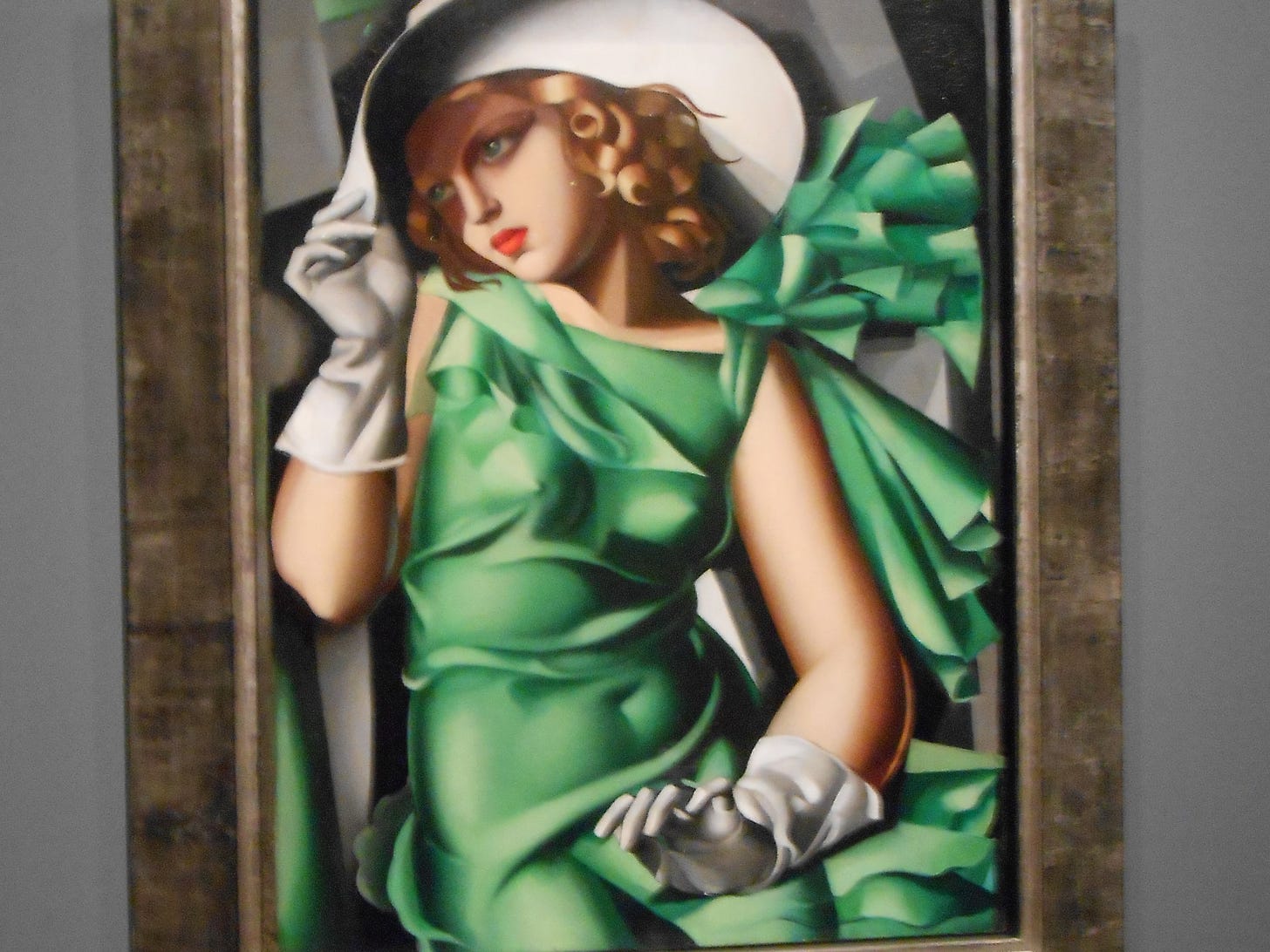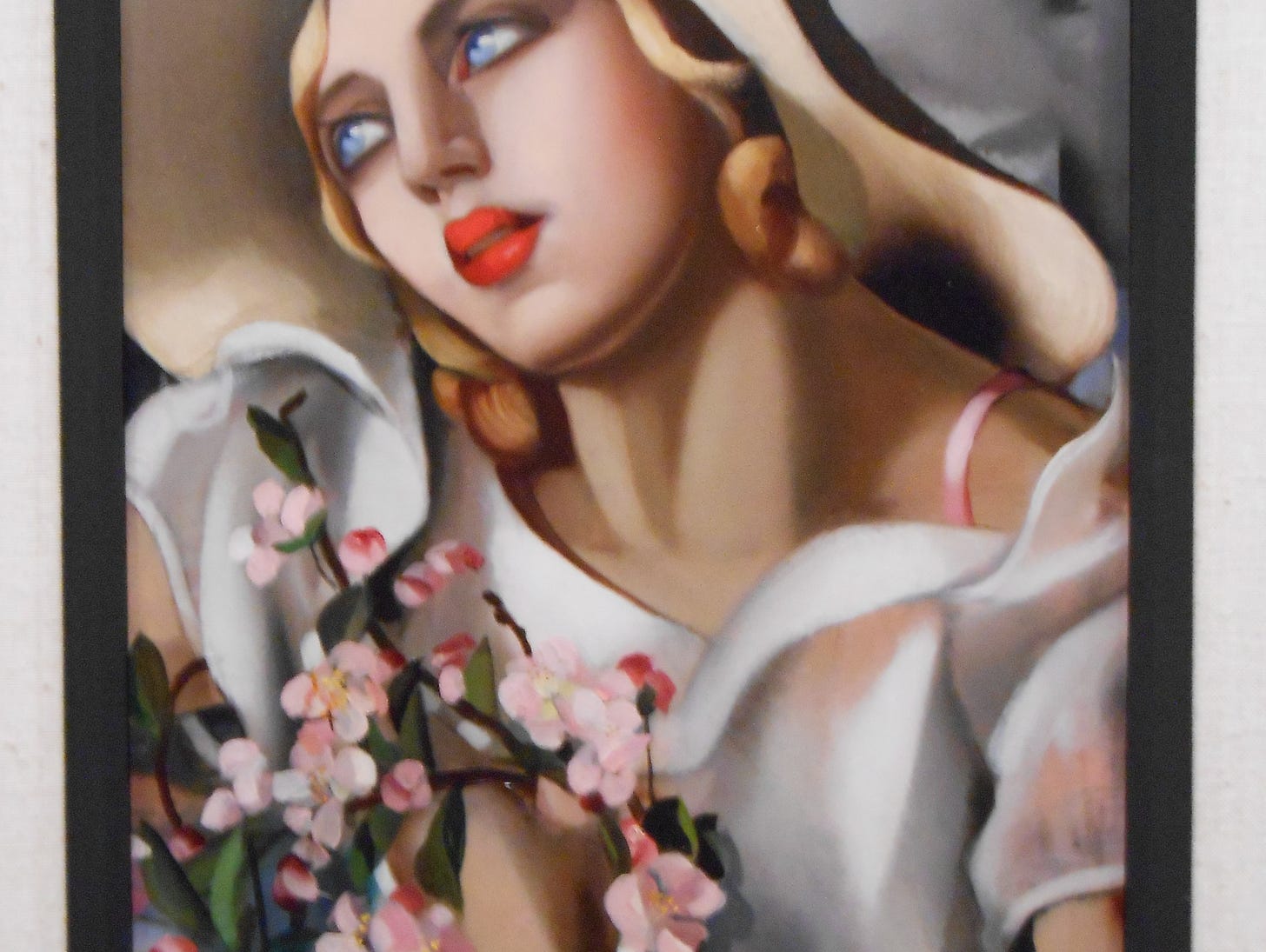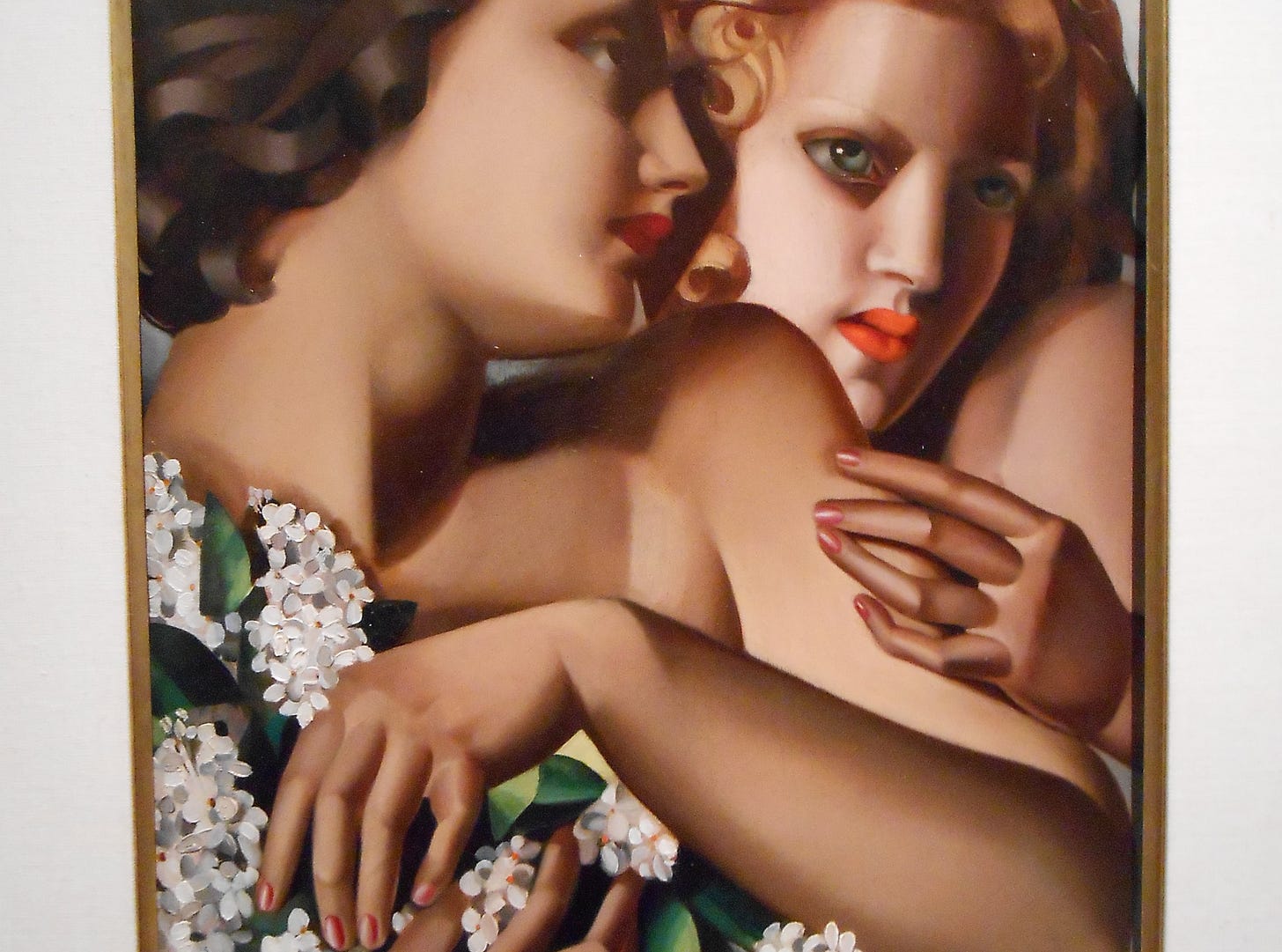For one shining moment, there was, if not Camelot, a time of glory days for lesbian hippie chicks like myself. It was after the pre-Stonewall days, when butch/femme was pretty much a mandatory social and relationship dynamic in lesbian bars. It was before the mass (kinda sorta) women’s community days, when at least some token amount of androgyny was de rigeur, akin to Canada’s mandate for a minimum of 10% Canadian content in on the air broadcasts. (And thus SCTV’s recurring “Great White North” sketches with those hosers Bob (Rick Moranis) and Doug (Dave Thomas) McKenzie, eh?)
It was a moment in time when lesbians could safely look like other women rather than having to adopt a particular look to be recognized as a lesbian—and accepted—in the bars and in the rap groups. It was not unusual to see posters on lesbian household walls of pairs of decently feminine women, or individual Pre-Raphaelite women with their long hair. The counterculture influence was strong in these ones. But, along came a fad of getting a buzz cut as a rite of passage, losing hair style habits with which one had grown up for the purpose of growing out new hair for a new, liberated life.
This never resonated with me, because I associated long, hippie-style hair with my own freedom. But there we were.
And, if you are familiar with the Art Deco artist Tamara de Lempicka (1894-1980), you would understand my eagerness to take in the recent Lempicka retrospective at the de Young Museum in Golden Gate Park. She had two paintings in the Exposition internationale des arts décoratifs et industriels modernes in Paris in 1925, got noticed by fashion magazines including Harper’s Bazaar, and later that year had a major exhibition of her own in Milan.
She was probably born in Warsaw, but her family moved to St. Petersburg. The family converted from Judaism to Christianity, and would flee St. Petersburg for Paris come the revolution. She had the run of museums and fine schools. It was a good time for a bisexual woman like Lempicka to come of age in Paris, given the artsy, bohemian lesbian culture that flourished there in the 1920s. She would flee again, for New York, in 1939, another good year to get out of town.
Lempicka was married twice, and had a relationship with another woman, Ira Perrot, for 25 years. There were also, as Tom Lehrer wrote of Alma Mahler Gropius Werfel, “God knows how many between.” She patronized women couturiers in Paris at a time when constricting Edwardian garments were giving way to outfits in which the new, modern woman could move freely. New styles would show up in her paintings.
The main thing about her paintings of women, though, was that many of them look as though artist and model made each other’s little hearts go pitty-pat. And so, they make my little heart go pitty-pat. When she paints women together, they look like they make each other’s little hearts go pitty-pat—and that also makes my little heart go pitty-pat. And these women are in the fashionable range, not androgynous. E.g. (sorry I couldn’t control the crops when I rotated the images):
and
and
Lempicka’s female nudes are recognized as groundbreaking for how they do not cater to the proverbial male gaze, for how self-possessed of their bodies and pleasures the subjects are.
Before I saw the exhibition, I attended a presentation on it at the Chan National Center for Queer Art in the Mission District. It was by the exhibition curator, and it was excellent. He, though, spoke of Lempicka as a “queer” artist. A wall text at the museum, though, spoke of Lempicka and “The Sapphic Eye.” That’s what I saw: the paintings of women were a woman’s vision, just as passion between women is a women’s passion to which any “queer” transgressive qualities are barely relevant, if at all.
Men’s and women’s gay movements diverged, even while still cooperating on essentials, because men’s and women’s same-sex attractions have different dynamics; and our sexual/romantic cultures are different. There was something that came back to my mind from ages ago in the museum: we wanted a separate women’s gay movement not only to get out from under expectations to type the letters and make the coffee, but because our oppression in the bad old days was different from gay men’s oppression. Gay men were oppressed as homosexuals, because of their highly disfavored sexual ways. Lesbians were oppressed as women, because by decentering men we abandoned and flouted the roles expected of us. Our sexuality is seen more as titillating than taboo, and depicted (poorly) for the male gaze.
The qualities of attraction between women lovers are the qualities of attraction between women friends, only kicked up an order or two of magnitude: the difference is one of degree, not of kind. In both, an element in the attraction is “the eternal feminine,” which, as Goethe states at the end of Faust, “draws us ever onward. Everything that can be perceived is only a symbol; the imperfect, which cannot be realized, here makes itself reality; that which cannot be described, here finally completes itself. It is the eternal feminine, always attracting us to the higher.” There’s something about interacting with other women that can inspire and uplift us.
This is what drives Wagner’s operatic protagonist Tannhäuser: the search for a woman in whose orbit he can find a passionate fulfillment so complete that he can stop his wandering. His problem is that he’s found it neither in the spiritual Elisabeth nor the carnal Venus. (Discussed further in my book Redemption Through Love! An irreverent guide to experiencing the transformative beauty of Wagner’s music dramas without being a nut. You know where to find it, hint, hint.) Oh, and one thing that drove Lempicka’s first husband away was playing Wagner at full blast while she painted.
It's a shame that a fear of getting trapped in conventional femininity and its constraints, heterosexuality being implied, has created a lesbian subculture of defeminizing one’s style to varying degrees. Though Lempicka necessarily painted for the culture of the era in which she was most popular, the femininity of her women calls to the femininity in other women, at least in this woman. It’s a happy thing.
I was in a reverie (an actual endorphin haze?) as I strolled through the exhibition. It was a happy day—and nice enough outside to have an udon lunch afterwards next door at the Harigawa Japanese Tea Garden.
Tamara de Lempicka: been there, done that, bought the museum catalog.
P.S. Lempicka’s art deco work was rediscovered during the Art Deco revival of the 1960s, and she apparently never fell into obscurity in Europe. Who knows what this exhibition (which is traveling) will do? Lempicka collectors include Madonna, Barbra Streisand, and Jack Nicholson. Pictures at these links:
Forbes says the revival is about time: https://www.forbes.com/sites/chaddscott/2024/11/20/at-long-last-a-tamara-de-lempicka-retrospective-in-america/
Click through to YouTube from Forbes to see the nine-minute video blurb on the retrospective full screen, shot, appropriately enough, in Oakland’s Art Deco palace, the Paramount Theatre:
I missed this 2018 Lempicka Google doodle: https://time.com/5278883/google-doodle-tamara-de-lempicka-artist/
And, something I didn’t know: Penguin used Lempicka pictures for the 2007 British paperback reissues of Ayn Rand’s Atlas Shrugged and The Fountainhead: https://www.penguin.co.uk/books/57553/atlas-shrugged-by-ayn-rand/9780141188935 and https://www.penguin.co.uk/books/57532/the-fountainhead-by-ayn-rand/9780141188621





